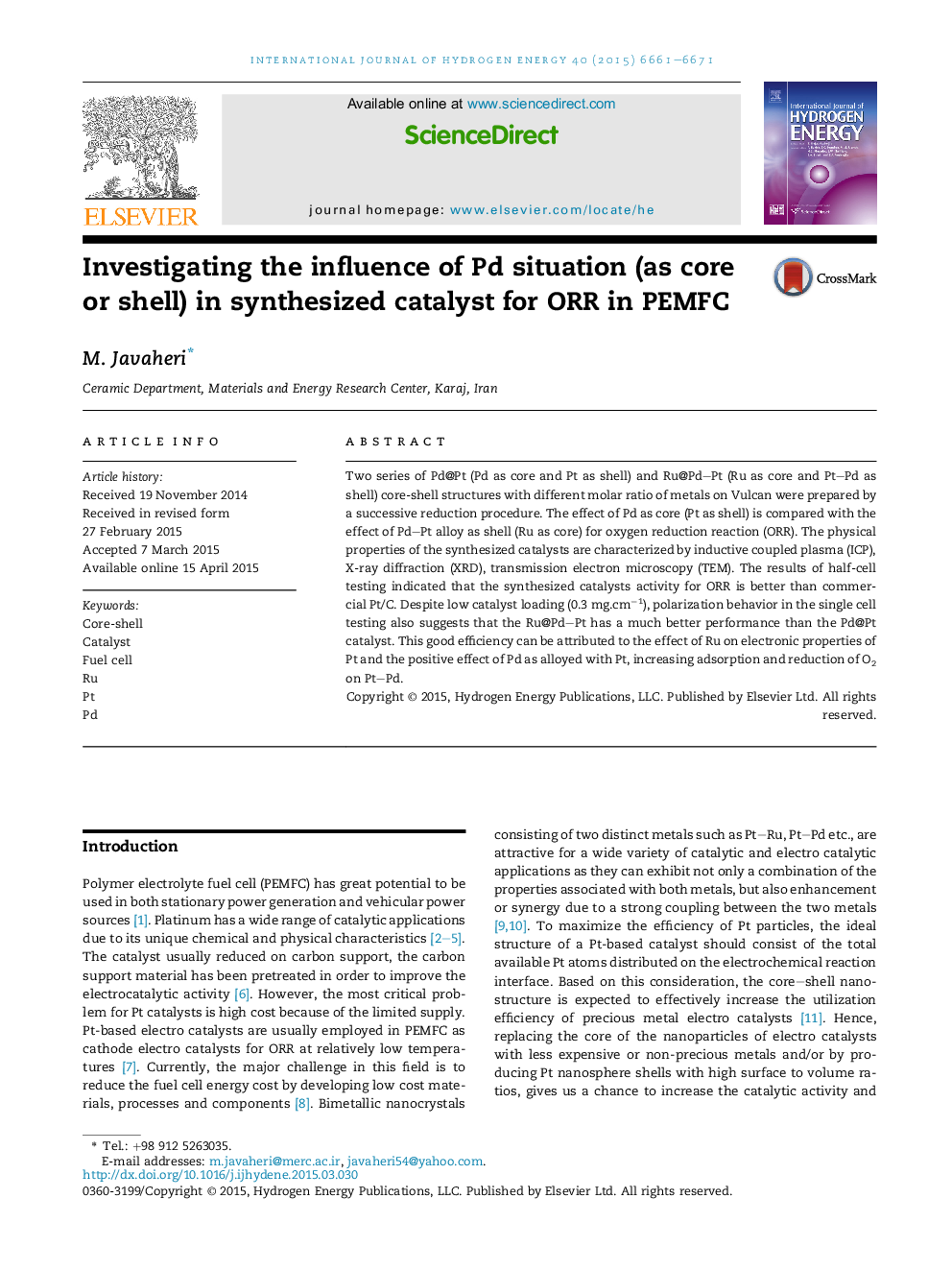| Article ID | Journal | Published Year | Pages | File Type |
|---|---|---|---|---|
| 1271462 | International Journal of Hydrogen Energy | 2015 | 11 Pages |
•The bimetallic and three metallic electrocatalyst synthesized with core–shell structure.•The effect of metal molar ratio was studied.•Situation of Pd in core or shell were investigated.•Applied impregnation and hydrothermal method for synthesized.•The mono cells of best catalyst were studied.
Two series of Pd@Pt (Pd as core and Pt as shell) and Ru@Pd–Pt (Ru as core and Pt–Pd as shell) core-shell structures with different molar ratio of metals on Vulcan were prepared by a successive reduction procedure. The effect of Pd as core (Pt as shell) is compared with the effect of Pd–Pt alloy as shell (Ru as core) for oxygen reduction reaction (ORR). The physical properties of the synthesized catalysts are characterized by inductive coupled plasma (ICP), X-ray diffraction (XRD), transmission electron microscopy (TEM). The results of half-cell testing indicated that the synthesized catalysts activity for ORR is better than commercial Pt/C. Despite low catalyst loading (0.3 mg.cm−1), polarization behavior in the single cell testing also suggests that the Ru@Pd–Pt has a much better performance than the Pd@Pt catalyst. This good efficiency can be attributed to the effect of Ru on electronic properties of Pt and the positive effect of Pd as alloyed with Pt, increasing adsorption and reduction of O2 on Pt–Pd.
